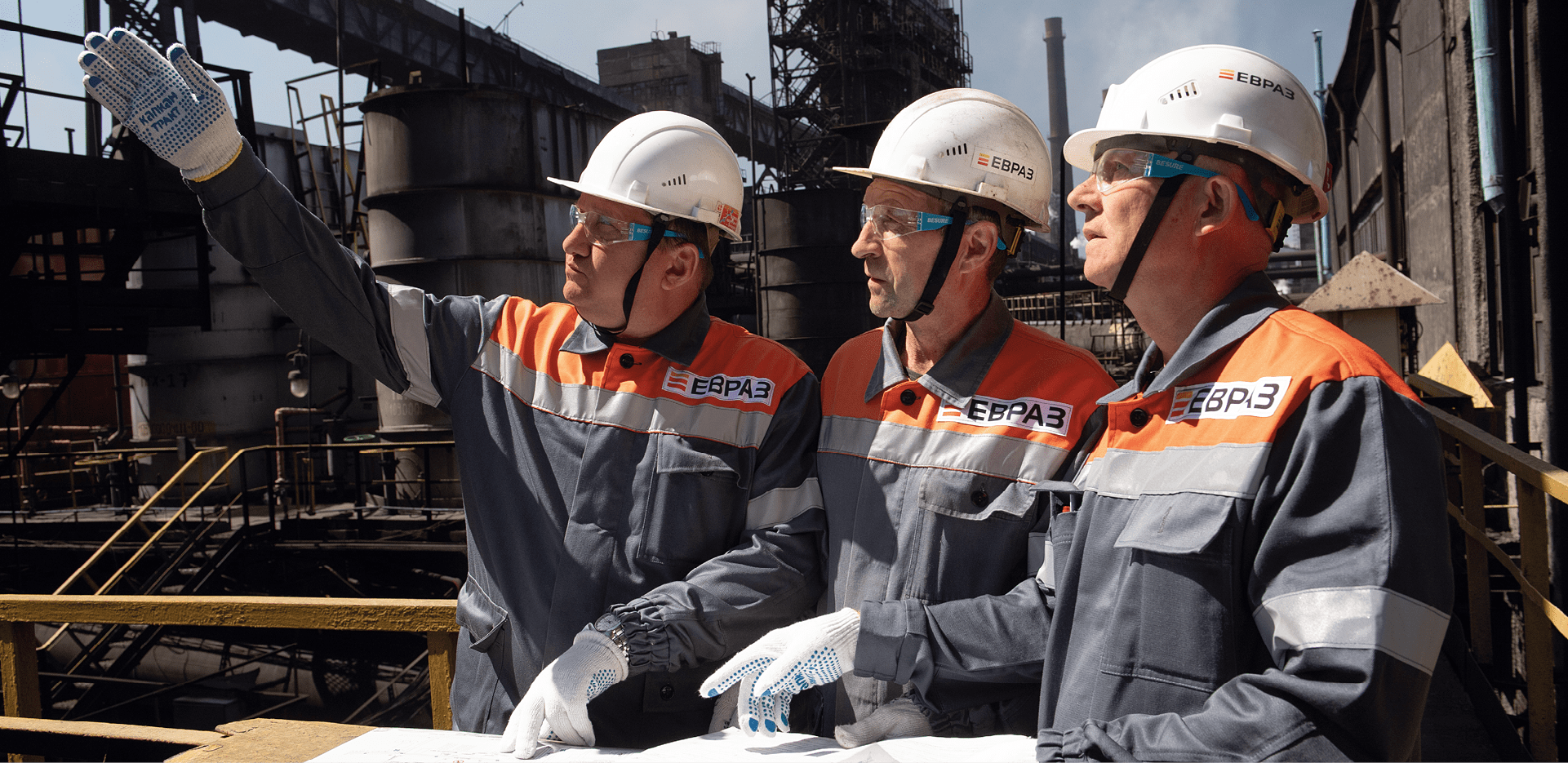Sustainability risk management
GRI 102-11
Approach to managing sustainability risks
Risk management plays a crucial role in the process of EVRAZ achieving our strategic goals and objectives. Our risk management approach covers all business processes and is adopted in all daily operations. The Group has elaborated a single framework for identifying, assessing, and managing risks at both corporate and operational level. We also apply the same approach to managing financial and non-financial risks. Risk management consists of the timely identification, analysis, and assessment of risks and implementing appropriate measures. The Group takes actions to manage not only strategic and financial risks, but also risks related to sustainable development: environmental, social, and economic.
EVRAZ annually reassesses all risks in order to ensure that they are duly recorded and that appropriate risk management measures have been developed.
The Group identifies risks and divides them into two categories: principal and non-principal. Principal risks are characterised by having the highest speed of impact and volatility, while non-principal risks are considered those that do not seriously impact the Group’s performance or prospects. EVRAZ closely monitors principal risks and also monitors non-principle ones.
The table below describes the Group’s sustainability related risks and provides an overview of the Group’s measures to manage them.
| Risk | Description | Risk management actions |
|---|---|---|
| HSE: environment | Steel and mining production carry an inherent risk of environmental impact and incidents relating to issues as diverse as water usage, quality of water discharged, waste recycling, tailing management, air emissions (including greenhouse gases), and community satisfaction. Consequently, EVRAZ faces risks including regulatory fines, penalties, adverse reputational impact and, in the extreme, the withdrawal of plant environmental licences, which would curtail operations indefinitely. Globally, there is an increase in regulatory scrutiny and pressure, as well as investor and customer expectations. |
|
| HSE: health, safety | Potential danger of fire, explosions and electrocution, as well as risks specific to individual mines: methane levels, rock falls and other accidents could lead to loss of personnel, outage or production delays, loss of material, equipment or product, or extensive damage compensation. Breach of any HSE laws, regulations and standards may result in fines, penalties and adverse reputational impacts and, in the extreme, the withdrawal of mining operational licences, thereby curtailing operations for an indefinite period. |
|
| Business interruption | Prolonged outages or production delays, especially in coal mining, could have a material adverse effect on the Group’s operating performance, production, financial condition and future prospects. In addition, any long-term business interruption may result in a loss of customers and competitive advantage, as well as damage to the Group’s reputation. |
|
| Potential regulatory actions by governments, including trade, antimonopoly, antidumping regulation, sanctions regimes, and other laws and regulations | Potential regulatory actions by governments, incl. trade, antimonopoly, antidumping regulation, sanctions regimes, and other laws and regulations. |
|
| Product competition | Excessive supply on the global market and greater competition, mostly in the steel products market, primarily due to competitors’ activity and introduction of new facilities. Low demand for construction products and increasing competition in this segment. Increasing competition in the rail product segment. Excessive supply of slabs on the global market and intensified competition. |
|
| HR and employee risks | Risks related to a lack of skills, a lack of succession planning, and reduced productivity due to labour unrest or low job satisfaction levels. |
|
| Social and community risks | Risks related to socio-economic instability in the regions where the Group operates, deteriorations in relations with local communities and authorities, and loss of the Group’s “social licence” to operate. |
|
| Climate change risks | Risks related to climate change and extreme weather events that could lead to business disruptions, resource shortages, and damage to the supply chain, equipment, and reputation. |
|
| Human rights risks | Risks related to violations of human rights. |
|
| Quality | Risks related to product quality. |
|

